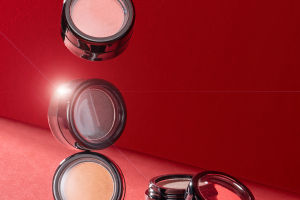Lipstick has long been an essential cosmetic for enhancing beauty and confidence.
However, there is a crucial distinction between applying lipstick to the lips and consuming it. While unintentional ingestion may occur, it is important to understand that lipstick contains various chemicals and substances that can be harmful when ingested in large quantities. Let’s explore the potential dangers of eating lipstick and the reasons why it should be strictly avoided.
Composition of Lipstick:
To comprehend the potential risks associated with consuming lipstick, it is vital to examine its composition. Lipstick formulations often contain a blend of pigments, oils, waxes, and emollients.
However, what raises concerns are the additional ingredients that are not meant for ingestion, such as preservatives, fragrances, and certain synthetic chemicals.
Toxic Substances:
Many lipsticks contain toxic substances like lead, which can have severe health implications when ingested. While lead levels in lipsticks have significantly reduced over the years, there are still concerns about potential contamination, especially in products from unregulated or less reputable sources. Chronic lead exposure can lead to neurological and developmental issues, particularly in children.
Colorants and Allergens:
Lipsticks use various colorants to achieve their vibrant shades. Some colorants, such as D&C Red No. 36, are approved for external use but not intended for ingestion.
Consuming such colorants in large quantities may cause gastrointestinal distress, allergic reactions, or even organ damage. Additionally, certain individuals may have allergies or sensitivities to common lipstick ingredients like fragrances, lanolin, or dyes, which can result in adverse health effects when ingested.
Chemical Sensitivities:
Lipstick formulations often contain synthetic chemicals, such as parabens, phthalates, and formaldehyde releasers, which are known to cause skin irritation and allergic reactions. When ingested, these substances can potentially disrupt the body's hormonal balance and have adverse effects on overall health.
Bacterial Contamination:
Lipsticks are exposed to various environmental factors and can easily accumulate bacteria and fungi over time. When applied to the lips, these microorganisms can enter the body inadvertently. Ingesting contaminated lipstick can lead to gastrointestinal issues, infections, or more severe health complications, especially for individuals with weakened immune systems.
Mislabeling and Regulation:
Another concern arises from the lack of strict regulation in the cosmetics industry, which may result in mislabeled or misbranded products. The absence of standardized guidelines and oversight can make it challenging to assess the safety of lipstick ingredients accurately.
Purchasing lipsticks from reputable brands and ensuring compliance with established safety standards becomes crucial to minimize potential risks.
Prevention and Safety Measures:
To avoid the harmful effects of consuming lipstick, it is essential to adhere to the following preventive measures:
Avoid ingestion: Consciously remind yourself not to lick or eat lipstick. Encourage children to understand that lipstick is not edible.
Check product labels: Look for lipsticks labeled as "lead-free" and opt for those with minimal synthetic chemicals, allergens, and colorants.
Choose reputable brands: Purchase lipsticks from well-established brands that prioritize safety and adhere to stringent quality control measures.
Practice good hygiene: Regularly clean and disinfect lipstick tubes, as well as applicators, to minimize bacterial contamination.
Opt for natural alternatives: Consider using natural and organic lip products that use safer, plant-based ingredients.
While a small amount of accidental ingestion of lipstick is unlikely to cause significant harm, it is crucial to understand the potential dangers associated with consuming larger quantities or regularly ingesting lipstick.


